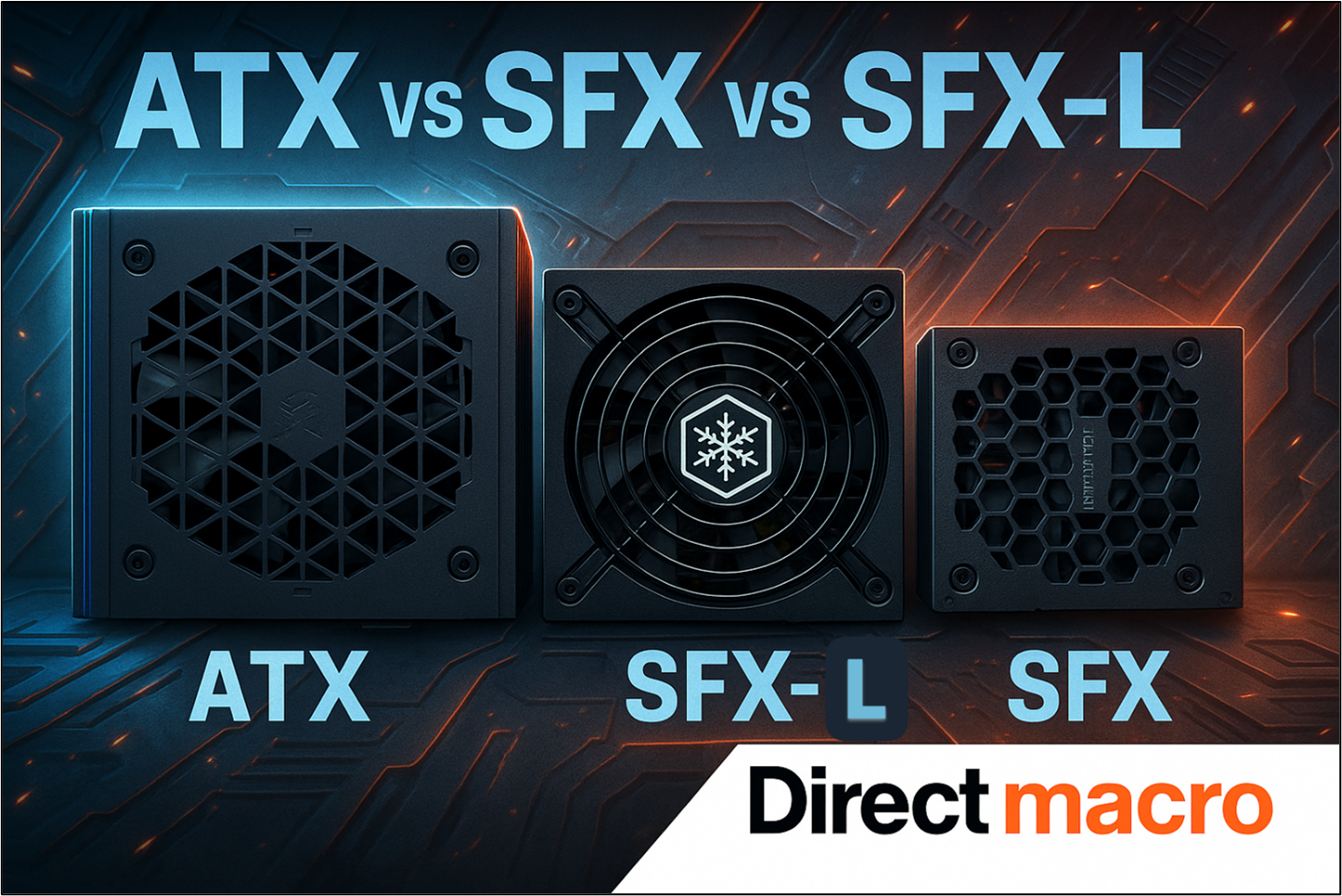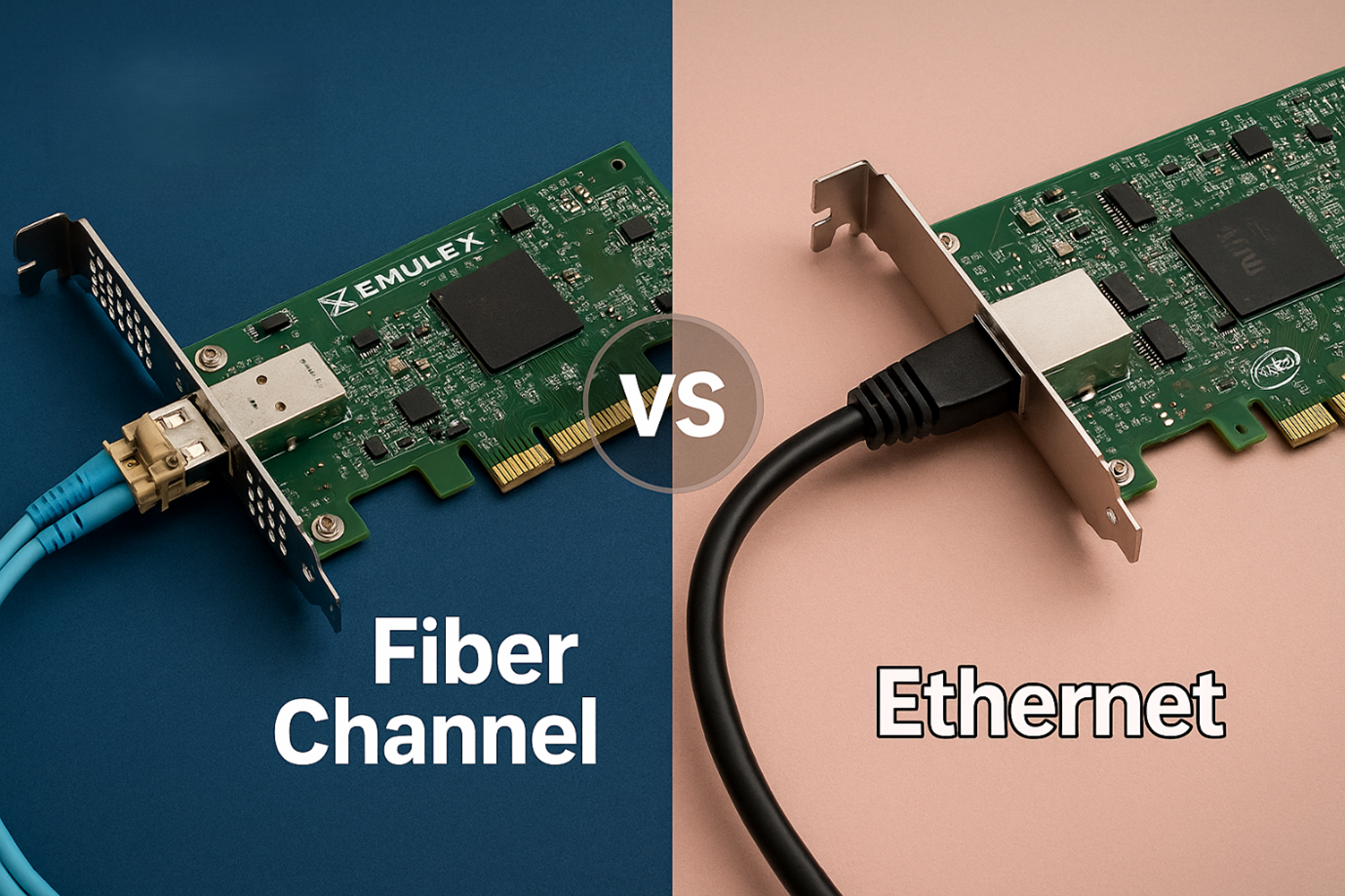Ultimate PSU Size Guide: ATX vs SFX vs SFX-L
Choosing the right power solution for your PC is a crucial decision that impacts performance, compatibility, and the overall longevity of your system. For most PC builders, the choice boils down to three main form factors: ATX, SFX, and SFX-L. While ATX has long been the industry standard, the rise of powerful small form factor (SFF) PCs has made SFX and SFX-L power supplies increasingly popular.
This ultimate PSU size guide will explain the key differences between ATX vs SFX vs SFX-L power supply units, explore the middle ground of SFX-L vs ATX PSU units, and help you determine the best fit for your next build.
PSU Sizes Explained: ATX, SFX, and SFX-L
Standardized dimensions define power supply sizes to ensure they fit correctly into compatible PC cases. The most common are ATX, SFX, and SFX-L, each serving a different type of build.
1. ATX: The Industry Standard
The ATX (Advanced Technology eXtended) power supply has been the standard for desktop computers since the mid-1990s.
- Dimensions: A standard ATX PSU typically measures 150 mm wide, 86 mm high, and 140 mm deep, although some high-wattage units can be longer.
- Best For: Standard mid-tower and full-tower cases where space is not a concern.
- Key Features: ATX units offer a wide range of wattages, from budget-friendly options to high-power models exceeding 1200W, making them suitable for everything from basic desktops to high-end gaming rigs with multiple GPUs. Their large size accommodates larger fans (120-140 mm) for better and quieter cooling.
2. SFX: The Compact Challenger
SFX (Small Form Factor) power supplies are a much smaller alternative to ATX, designed for compact builds using mini-ITX or micro ATX motherboards.
- Dimensions: A standard SFX unit is a mere 125 mm wide, 63.5 mm high, and 100 mm deep.
- Best For: Small form factor (SFF) cases, home theater PCs (HTPCs), and other space-constrained builds.
- Key Features: Despite their size, modern SFX power supplies can deliver impressive wattage, with some models offering up to 1000W or more. This makes it possible to build powerful gaming PCs in tiny cases, but the smaller size can lead to trade-offs in noise and heat, as their fans are smaller and spin faster to compensate.
3. SFX-L: The Best of Both Worlds?
SFX-L (Small Form Factor eXtended—Longer) is a hybrid form factor that is the same height and width as a standard SFX PSU but is slightly longer.
- Dimensions: SFX-L units are typically 125 mm wide, 63.5 mm high, and around 130 mm deep.
- Best For: SFF cases that can accommodate the extra length. It’s a stepping stone between a compact SFX unit and a full ATX PSU.
- Key Features: The additional length allows for a larger and quieter 120mm fan compared to the 92mm fan often found in standard SFX PSUs. It provides better cooling and a more favorable acoustic signature for those who need a quieter system. SFX-L also typically offers higher wattage capacities than standard SFX.
Quick Comparison Between ATX vs SFX vs SFX-L
| Feature | ATX | SFX | SFX-L |
| Dimensions (WxHxD) | 150 mm x 86 mm x 140 mm+ | 125 mm x 63.5mm x 100mm | 125 mm x 63.5mm x 130mm |
| Typical Wattage | 300W–1200W+ | 300W–1000W+ | 650W–1000W+ |
| Fan Size | 120 mm or 140mm | 92 mm | 120 mm |
| Noise Level | Generally quieter due to larger fan | Can be noisier due to smaller fan needing to spin faster | Quieter than standard SFX due to larger fan |
| Best Use Case | Standard desktops, gaming rigs, and workstations | Ultra-compact SFF cases and HTPCs | SFF cases that can accommodate the extra length for improved cooling |
| Cable Management | Ample space for cable routing | A fully modular design is highly recommended | Fully modular design highly recommended |
| Cost | Generally, more affordable per watt | More expensive per watt due to density | More expensive than ATX, but often cheaper than high-wattage SFX |
ATX vs SFX Power Supply: A Detailed Comparison
Deciding between an ATX and SFX power supply means weighing several factors beyond just physical size.
1. Dimensions and Footprint
The most obvious difference is size. An ATX PSU is significantly larger than an SFX model, which is why it’s the standard for larger cases where space isn’t an issue. SFX units are designed specifically to minimize footprint, making them a necessity for compact builds. Many SFX PSUs even come with an adapter bracket to fit in cases with standard ATX mounting holes, offering flexibility if you choose to move to a larger case later.
2. Wattage and Power Delivery
- ATX: Traditionally, ATX PSUs offered a wider range of wattage options, especially at the higher end (over 1000W). However, the wattage gap has shrunk considerably.
- SFX/SFX-L: While SFX units once maxed out at around 800W, modern SFX and SFX-L models now offer high-wattage options (e.g., 850W, 1000W) to support demanding hardware.
3. Cooling and Noise
- ATX: The larger frame of an ATX PSU allows for a larger fan (120 mm or 140 mm), which can spin slower to move the same amount of air as a smaller fan. This generally results in quieter operation, especially at low to medium loads.
- SFX: The compact size of SFX PSUs means they use smaller fans (typically 92 mm). To achieve sufficient cooling, these fans must spin faster, which can make them noisier than ATX units under high load. Many high-end SFX PSUs, however, feature hybrid or semi-passive fan modes that keep the fan off during light use.
4. Cable Management and Modularity
Both ATX and SFX power supplies are available in modular, semi-modular, and non-modular configurations.
- ATX: In a large case with an ATX PSU, there’s often plenty of space to hide extra cables, even with non-modular units.
- SFX/SFX-L: Fully modular PSUs are a massive advantage in SFF cases, where every inch of space is precious. SFX PSUs often come with shorter cables optimized for smaller cases, which can be a double-edged sword: great for compact builds, but potentially too short for larger cases without extensions.
5. Pricing and Availability
SFX and SFX-L power supplies are generally pricier per watt than their ATX counterparts due to their specialized and high-density design. However, prices vary greatly depending on brand, efficiency rating, and features of the power units.
SFX-L vs ATX PSU: Finding the Right Balance
The SFX-L form factor offers a compelling compromise for builders who want a compact system but are concerned about the noise or power limitations of a standard SFX unit.
1. Comparing SFX-L Advantages
- Quieter Operation: The larger 120 mm fan in an SFX-L unit provides superior cooling and a quieter acoustic profile compared to the smaller fans in standard SFX models.
- Higher Wattage Potential: The increased length and larger internal components often allow for higher wattage capabilities than standard SFX units.
2. ATX vs. SFX-L Trade-offs
- Size: An SFX-L PSU is still a compact power solution that allow for smaller case designs that an ATX PSU would never fit into. However, the extra length over a standard SFX model is a crucial clearance check for any SFF builder.
- Cable Compatibility: While SFX-L offers more space for modular cables, it’s essential to use the correct Type 4 or Type 5 modular cables to ensure reliability and performance.
How to Choose the Right PSU for Your Build?
Selecting the best power supply units involves a careful and deliberate process. Here’s a step-by-step guide to help you choose wisely.
1. Evaluate Your Case Compatibility
- Small Form Factor Cases: If your case is a compact Mini-ITX or Micro ATX build, an SFX or SFX-L power supply is almost always required. The case’s specifications will list the maximum PSU size supported.
- Standard Cases: Most mid-tower and full-tower cases accommodate ATX power supplies. You can sometimes use an SFX or SFX-L PSU with an adapter bracket in an ATX case, which can free up internal space for better airflow.
2. Calculate Your Power Needs
Use a PSU wattage calculator from a reputable manufacturer to estimate your system’s power consumption. It is advisable to choose a PSU with 20-30% more wattage than your calculated needs to account for peak loads, efficiency sweet spots, and future upgrades.
3. Assess Your Cooling and Noise Preferences
- High Performance, Low Noise: If quiet operation is a top priority, a high-efficiency ATX or SFX-L unit with a larger fan is the best power solution.
- Compact and Powerful: If you are building in the smallest possible case and can tolerate slightly more fan noise, a high-quality SFX unit is the way to go.
Best SFX Power Supply Recommendations
For enthusiasts building high-performance SFF PCs, selecting a reliable and efficient SFX power supply is critical. Look for models with high-efficiency ratings (80 Plus Gold, Platinum, or Titanium), fully modular cables, and silent or semi-passive fan modes. Reputable brands like Corsair, Seasonic, and Cooler Master offer excellent options across various wattage ranges.
Final Thoughts
Ultimately, the choice between ATX vs SFX vs SFX-L is not about which is inherently best but rather which is the best fit for your specific build. Each form factor offers a distinct set of trade-offs, and your decision should be based on your primary needs:
- Choose ATX
If your priority is maximum performance, high wattage options, and the quietest possible operation, and your case has the room to spare. ATX PSUs generally offer a wider selection at various price points and wattages, making them a safe and reliable choice for most standard-sized builds.
- Choose SFX
If you are building in a compact or small form factor (SFF) case where space is the absolute top priority. Modern SFX units can still deliver high wattage, but be mindful of potential trade-offs in noise, as the smaller fans may need to spin faster under heavy load.
- Choose SFX-L
If you want to strike a balance between the small footprint of SFX and the quieter operation of ATX. The slightly longer form factor allows for a larger and quieter fan which make it an excellent choice for SFF enthusiasts who prioritize low noise levels without sacrificing too much space.
No matter your choice, remember that the power supply is the heart of your PC. Investing in a high-quality, efficient unit from a reputable brand who offer an appropriate wattage for your components, is crucial for your system’s stability, longevity, and overall performance.
For more information and support call us at (855) 483-7810 or visit our website direct macro to request bulk quires.
FAQs
- Can I use an SFX PSU in an ATX case?
Yes, many SFX PSUs come with an SFX-to-ATX adapter bracket, allowing them to be mounted in a standard ATX power supply bay, which can provide extra room in your case. - What is a fully modular power supply?
A fully modular PSU allows you to detach all cables, so you only connect the ones you need for a cleaner build and improved airflow, especially useful in small cases. - Do I need a high-wattage PSU for a compact PC?
The wattage depends on your components, not the case size, but modern SFX and SFX-L units offer high-wattage options to power even demanding SFF builds. - Is SFX-L the best option for quiet SFF builds?
For quieter SFF builds, SFX-L is often preferable to standard SFX due to its larger fan, which can cool more effectively with less noise.
Do you need advice on buying or selling hardware? Fill out the form and we will return.

Sales & Support
(855) 483-7810
We respond within 48 hours on all weekdays
Opening hours
Monday to thursday: 08.30-16.30
Friday: 08.30-15.30








